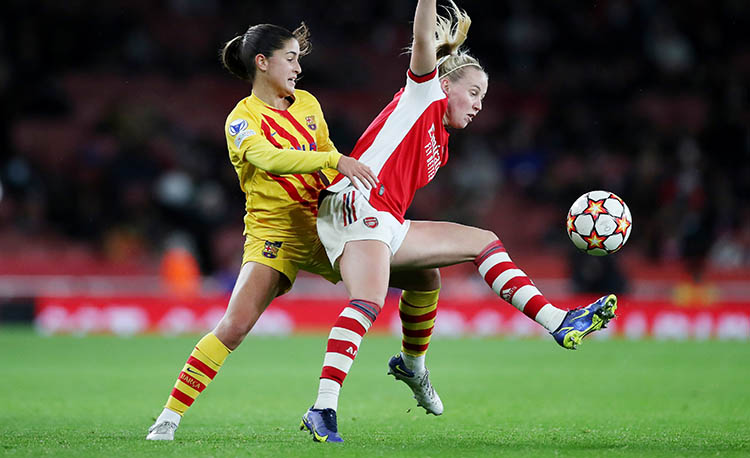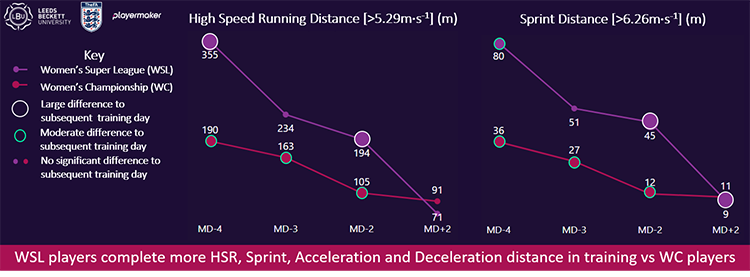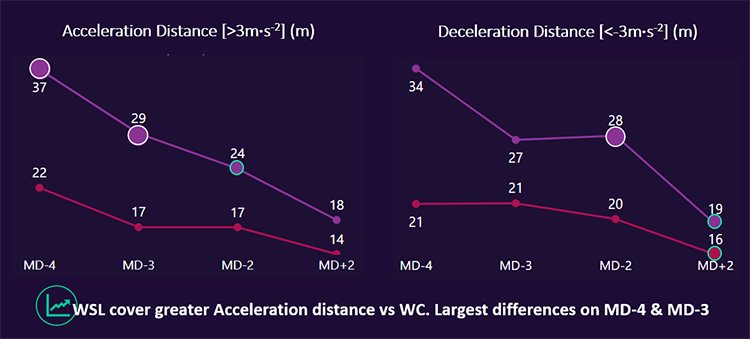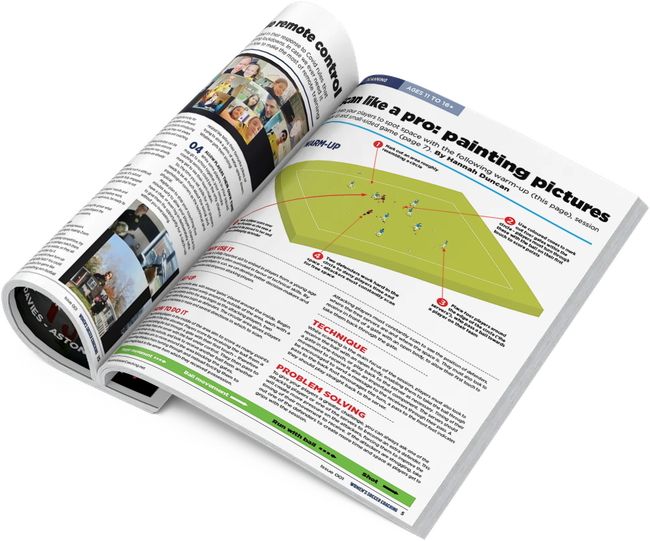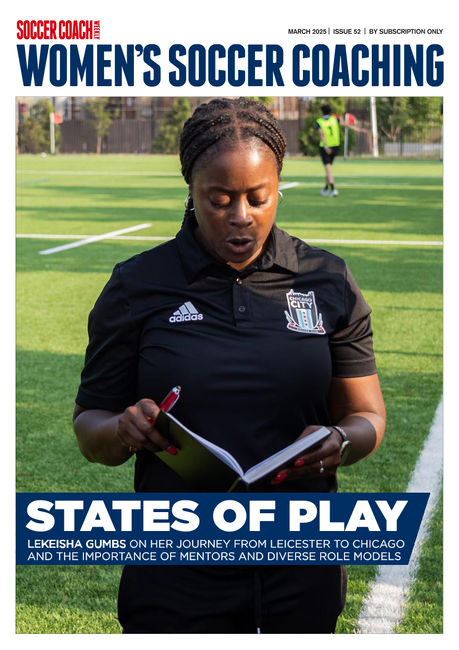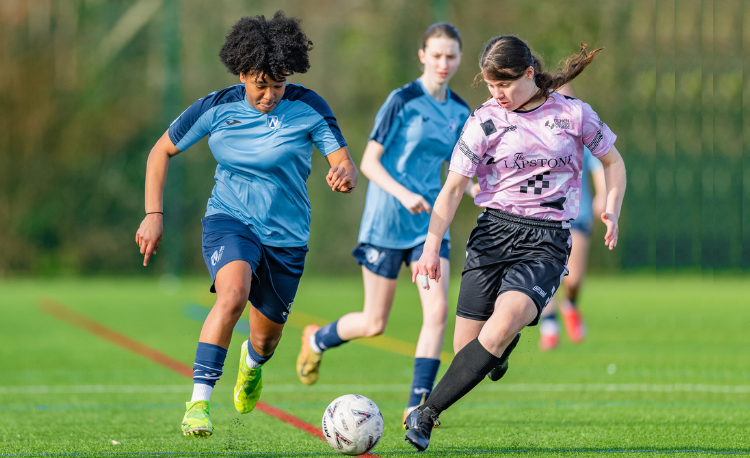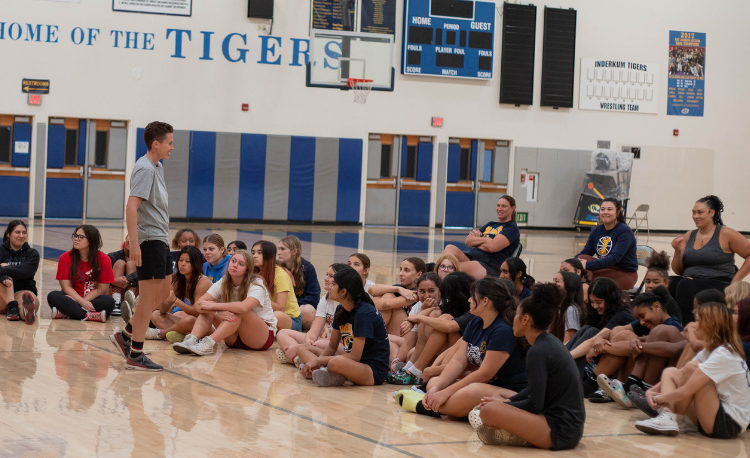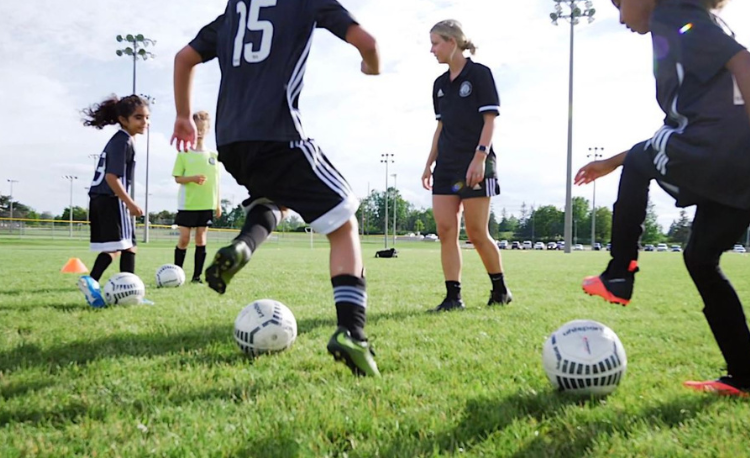You are viewing
2 of your 3 free articles
Tough at the top
Elite players are fitter, stronger and play the game faster than ever. Naomi Myhill casts her eye over training data from England’s top two divisions and provides tips on adapting it for your own team’s sessions
In recent years there has been an exponential growth in the professionalism of women’s soccer.
Elite players are now employed on pro contracts and are provided with higher-level coaching and access to support in strength and conditioning, medicine and nutrition.
This has led to improvements in players’ athleticism. For example, reported distance covered during an aerobic fitness test in senior players increased by 17% between 2009 and 2019.
Furthermore, this has translated to improvements in match intensity. An examination of the previous three Fifa Women’s World Cups shows nearly identical sprint distances between 2011 and 2015 - but a 21% increase from 2015 to 2019.
This hefty improvement, and greater distances being covered at higher speeds, suggests the game is getting faster and players require a higher level of athleticism to play at the elite level.
But what does this mean for the physical development of female players?
This is a question that led to some key performance challenges being identified by the Football Association’s, which formed the Domestic Demands of the Game Project, in partnership with Leeds Beckett University.
Two performance questions to solve were: 1. How can we optimise the physical development of female players to ensure they are prepared for the demands of the game?, and 2. How can we optimise progression between competition standards?
“Elite players on pro contracts are provided with higher- level coaching...”
To answer these questions, we first need to understand the current training practices and match demands of elite female players in England.
By understanding what players are doing in training - in terms of total distance covered, high-speed running, sprinting, accelerations and decelerations - comparisons can then be made to what players are required to do in matches.
This will allow a better understanding of whether there is a ‘performance gap’ - in other words, whether training is preparing players for the demands of matches.
If players are not properly prepared, this can lead to increased fatigue, poor decision- making and a greater injury risk.
The purpose of this article is to share insights into training practices at elite level and to provoke thought from coaches on how the data can be utilised in their own context further down the pyramid.
Analysis from the elite level will not only inform whether a performance gap exists between training and matches, but also between competition standards - providing a tangible benchmark of training characteristics for teams further down the pyramid to build towards.
The first study in this project analysed the training characteristics of the top-flight Women’s Super League (WSL) and second- tier FA Women’s Championship players.
The data was collected during the 2020- 21 season and shows the physical training characteristics across training days.
Related Files
Before reading on, it should be noted that while all WSL teams are professional, there is a mix of professional and semi-professional teams in the FA Women’s Championship. This may explain some of the findings.
When studying the figures in this article, always keep in mind how they can be related back to your players and their current level of competition and training status.
PHYSICAL TRAINING CHARACTERISTICS OF ELITE FEMALE PLAYERS IN ENGLAND
Between competition standards
The study identified the days on which WSL and FA Women’s Championship players most frequently trained - these were each of the four days leading up to matchday.
On average, WSL teams trained five times a week and FA Women’s Championship teams trained three times a week.
As per the graphic above, it was observed that - across the training days - WSL players covered greater high-speed running and sprint distances compared to FA Women’s Championship players, as well as higher magnitude acceleration and deceleration.
The largest difference in total high-speed running distance covered, and distance per minute between competition standard, was found four days before matchday.
There was a large increase in sprint distances covered by WSL players four days (80m) and two days (45m) prior to matchday, compared to FA Women’s Championship players (36m and 12m respectively).
When looking at acceleration and deceleration distance (see graphic below), large differences between competition standards were reported four, three and two days before matchday, with higher values observed once again for WSL players.
Between training days
Findings showed that high-speed running and sprint distances are key characteristics that differentiate between training days.
“Players most frequently trained on the four days leading up to matchday...”
The greatest output in both was observed in the middle of the week (four days before matchday) compared to training sessions falling closer to matchday.
It is likely that both WSL and FA Women’s Championship teams follow a tapering approach, gradually reducing high-speed running and sprint distances towards matchday.
By exposing players to higher physical demands in the middle of the week, this can induce a positive training effect that allows negative effects, such as fatigue, to reduce prior to matchday.
How do you plan your training week?
If your aim is to increase the physical demands you expose your players to, you may focus on one session in the week or multiple, depending on your training frequency.
However, suddenly increasing the high- speed running and sprint demands within 48 hours of matchday will likely lead to increased player fatigue and reduced readiness to play.
Consideration of recovery time when overloading players is important. Could you expose your players to higher locomotor activity during a midweek session, such as four days before a game?
Physical qualities
Similar physical qualities were observed between WSL and FA Women’s Championship players in terms of maximum speeds and maximal aerobic speed.
These findings (see next page) suggest that it is training prescription that determines the difference in training characteristics between these competition standards.
However, the frequency of training and available resources between full-time and part-time teams will likely influence training volume and intensity prescription between competition standards.
The restricted training frequency for FA Women’s Championship players compared to those in the WSL is likely to contribute to the reduced training volume and intensity.
ADAPTING TRAINING METHODS TO CLOSE THE GAP
With fewer training sessions, maximising your available time with players is critical. Manipulating practices within a session is a useful way to do this.
Small-sided games often result in more frequent changes of direction which may increase acceleration and deceleration stimulus. However, to ensure players increase high-speed running and spring distance output, you might consider increasing the area size, particularly on a ‘high’ extensive day.
For some practices, you might add a sprint condition when a team loses possession or scores a goal. Other types of conditions could include reduced recovery time between and within practices.
However, it is important to consider the training status and experience of your players before implementing increased high-speed running and sprint prescription, to reduce the impact of fatigue.
If your players train once or twice a week, a gradual increase of high-speed running through manipulating pitch dimensions for one session a week is a good start, before progressing to conditioned drills and reduced recovery time.
Including sprint work in training each week is important to develop your players’ underlying physical qualities so they can cope with the physical demands during a match.
If you are limited in training frequency, a simple method to integrate sprints is to include additional sprint drills at the end of the warm-up. For example, you could prescribe 10-50m sprints at 95-100% maximum effort with complete recovery. You should also consider acceleration and deceleration within your training prescription.
If you want to increase these distances you may think about designing practices that require players to anticipate or react to opponents, which may have a greater transfer to match performance. Given higher speeds are required for deceleration training, for time efficiency you could prescribe drills that elicit deceleration and sprint distance together - for example, requiring deceleration to a stop over a short distance immediately following a maximal sprint.
If you are limited by available training time during the week, you might consider prescribing external conditioning to top up players’ high-speed running and sprint distances covered per week.
“You should consider acceleration and deceleration within your training...”
While this can’t replace a team training session, ‘top up’ running can induce positive training outcomes alongside team training.
An example of an external conditioning exercise for high-speed running could be two reps of 4-6 minutes of 10 seconds sprinting and 20 seconds rest. For speed, an example could be 4-6 progressive 40/60m runs, building up to 90- 95% maximum sprint speed, with 45 seconds rest between repetitions.
Though this article focuses on physical output in training, players must have the strength capacity for greater high-speed running distances and to resist fatigue for longer.
Two players may cover the same sprint distance but at very different costs in terms of fatigue, if one player’s strength capabilities are lower. Greater muscular strength can enhance sprinting, change of direction ability, fatigue resistance, and reduce injury risk.
Off-pitch conditioning in the gym should be included in your weekly training programme to develop players’ strength capacity and augment physical outputs in training.
CONCLUSION
This physical data provides a benchmark of what WSL and FA Women’s Championship players are achieving in training across training days, but it only provides an overview.
Context in each environment is critical - it is important to appreciate those benchmarks can be achieved in different ways, through varied training prescription and drill modalities.
In addition, physical demands are only one piece of the puzzle - you can’t win a match by running the fastest or the furthest without technical skill and tactical understanding.
However, by improving a player’s physical qualities through training prescription, they will be able to output greater high-speed distances later in a match, and delay fatigue.
Fatigue can lead to poor decision-making, more fouls, reduced recovery and reduced player availability for critical games. As coaches, you might reflect on your team environment and competition standard and consider how to use the data in this article to support your training.
Newsletter Sign Up
Newsletter Sign Up
Discover the simple way to become a more effective, more successful soccer coach
In a recent survey 89% of subscribers said Women's Soccer Coaching makes them more confident, 91% said Women's Soccer Coaching makes them a more effective coach and 93% said Women's Soccer Coaching makes them more inspired.
*includes 3 coaching manuals
Get Inspired
All the latest techniques and approaches
Women's Soccer Coaching offers proven and easy to use soccer drills, coaching sessions, practice plans, small-sided games, warm-ups, training tips and advice.
We've been at the cutting edge of soccer coaching since we launched Soccer Coach Weekly in 2007, creating resources for the grassroots youth coach, following best practice from around the world and insights from the professional game.
